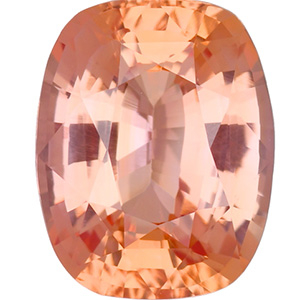
GIA recently spotted some sapphires that underwent unusual color changes after stability testing and is considering ways to inform retailers before their customers get an unpleasant shock.
GIA’s stability tests involve exposing sapphires to hours of intense incandescent illumination. This test can cause a pink sapphire with an unstable orange component to fade, so that the pink gem turns a lot pinker. Recently, GIA noticed some unusual sapphires that started as a padparadscha or pure orange color reacted to the test by becoming more orange or yellow.
This color change can be sparked by prolonged exposure to ultraviolet light, even that found in ordinary daylight. This means that these sapphires could change color under standard retail lamps or when a consumer wears their ring out in the sun.
Dr. Aaron C. Palke, GIA senior manager of research and coauthor of a recent article on color change in sapphires, says the increasing number of sapphires found to have unstable color is not caused by a new find or treatment, but the result of GIA increasing its regular stability testing on sapphires.
“We started seeing it after we started doing the stability test,” Palke says, adding that before 2018, color-stability testing on sapphires was “not part of our standard laboratory procedures.”
GIA said the unusual color behavior raises questions about how the lab should report color on sapphires that exhibit this change. Yet, while it’s something that GIA is keeping an eye on, it’s not that common.
“We get this river of gems at GIA,” says Palke, “and so far we have not seen this often.”
GIA is planning a longer article on this topic for an upcoming issue of Gems & Gemology.
Top: This unusual 3.54 ct. sapphire, originally a padparadscha color, increased its orange tone after being subject to color-stability tests at the GIA laboratory (photo: Diego Sanchez/courtesy of GIA).
- Subscribe to the JCK News Daily
- Subscribe to the JCK Special Report
- Follow JCK on Instagram: @jckmagazine
- Follow JCK on X: @jckmagazine
- Follow JCK on Facebook: @jckmagazine






